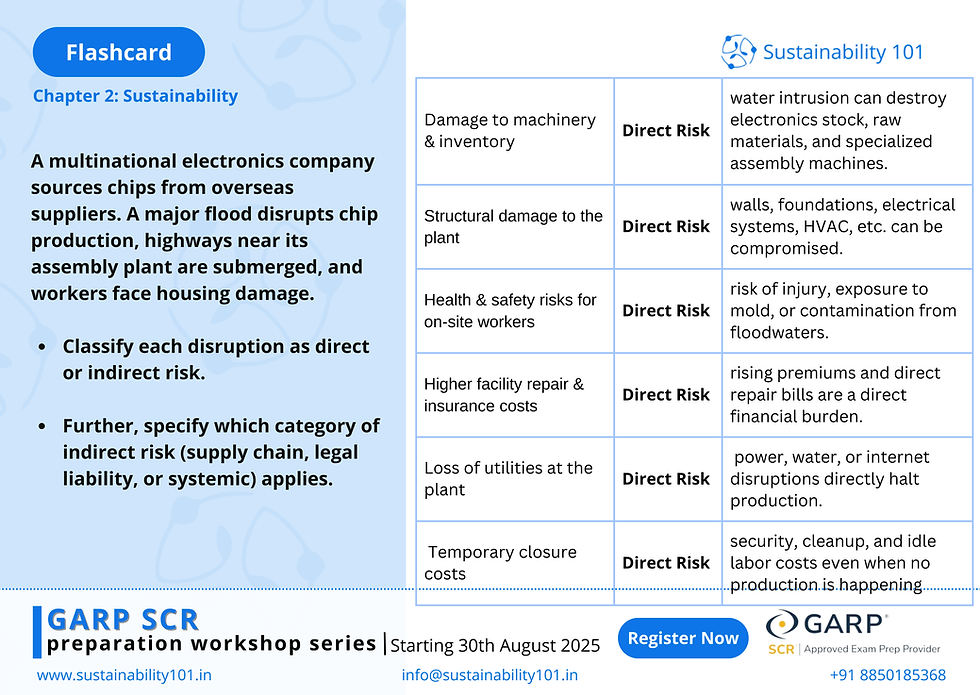GARP SCR- Chapter 2: Sustainability
- Sustainability101 Team - Pratiksha More
- Aug 29
- 2 min read
How can Life Cycle Assessments (LCAs) support corporate alignment with the UN SDGs, What are the limitations of relying solely on LCAs?
A Life Cycle Assessment (LCA) is a comprehensive method for evaluating the environmental impacts of a product or service throughout its entire life cycle, from raw material extraction to disposal
It's a tool used to understand and minimize environmental burdens associated with a product's journey, helping businesses, policymakers, and consumers make more sustainable choices.

Ecosystem services are divided into provisioning, regulating, cultural, and supporting services.
If a city depends on mangrove forests for coastal protection, freshwater availability, and tourism, classify each benefit into the correct ecosystem service type.
Mangroves:
A mangrove ecosystem is a unique coastal environment where specialized salt-tolerant trees and shrubs, called mangroves, grow in tropical and subtropical regions, thriving at the interface between land and sea.
These complex systems are vital for providing coastal protection against storms, buffering shorelines from erosion, acting as nurseries for marine life, supporting biodiversity, and playing a crucial role in carbon capture and climate regulation.
However, mangrove ecosystems are rapidly disappearing due to human activity, threatening the rich web of life they support and the coastal communities they protect.

A multinational electronics company sources chips from overseas suppliers. A major flood disrupts chip production, highways near its assembly plant are submerged, and workers face housing damage.
Classify each disruption as direct or indirect risk.
Further, specify which category of indirect risk (supply chain, legal liability, or systemic) applies.
Direct Risks
Direct risks are the immediate, observable impacts of climate-related events on an organization’s operations, assets, or people.
They occur as a direct consequence of physical or transition events.
Examples:
Flooding that damages a factory or disrupts supply chains.
A heatwave reducing crop yield for an agricultural firm.
New carbon tax directly increasing operating costs for a cement plant.
Indirect Risks
Indirect risks are the second-order or ripple effects that arise as a consequence of direct risks.
They materialize through interconnected systems like markets, finance, or society.
Examples:
Flooding (direct) → disruption of suppliers → production delays across industries.
Carbon tax (direct) → higher energy costs → reduced consumer demand.
Wildfires (direct) → rising insurance claims → withdrawal of insurers from high-risk regions.


GARP SCR Exam Preparation workshop - 5th Cohort by Sustainability 101
Chapter 2: Sustainability
Date: 31th August 2025, Sunday
Venue: Online (Zoom)
Contact us: info@sustaiability.in or call at +91 8850185368




Comments